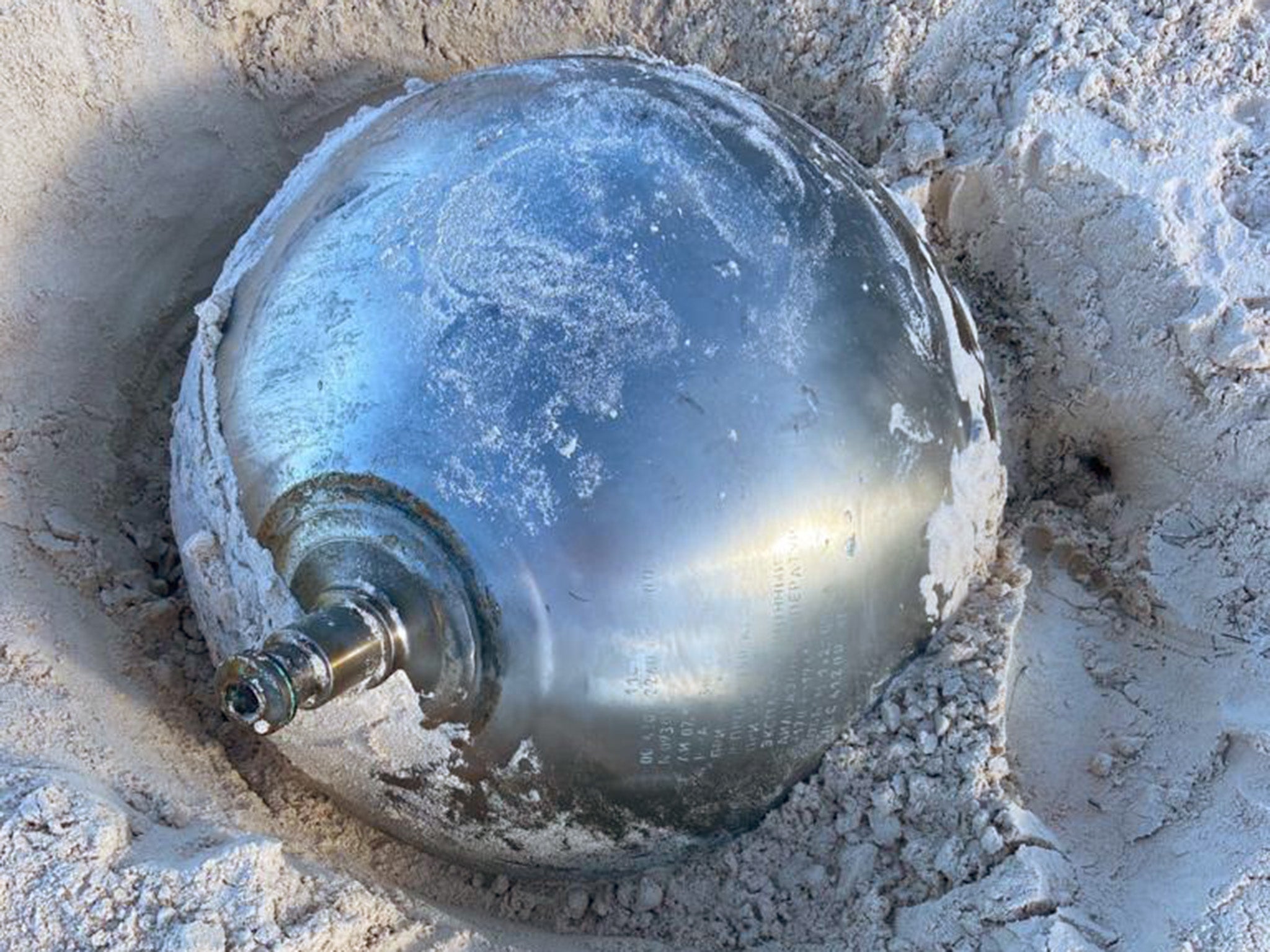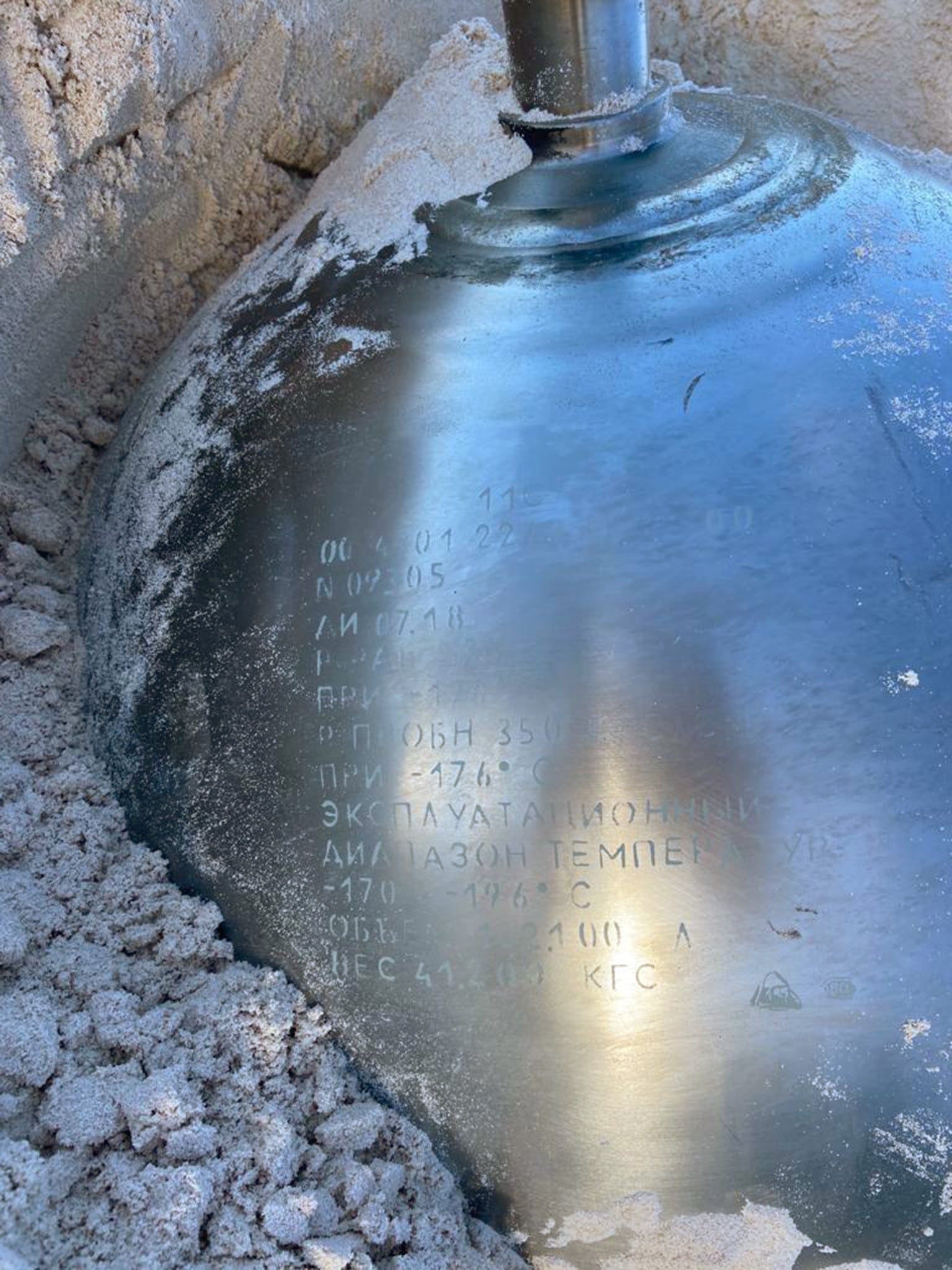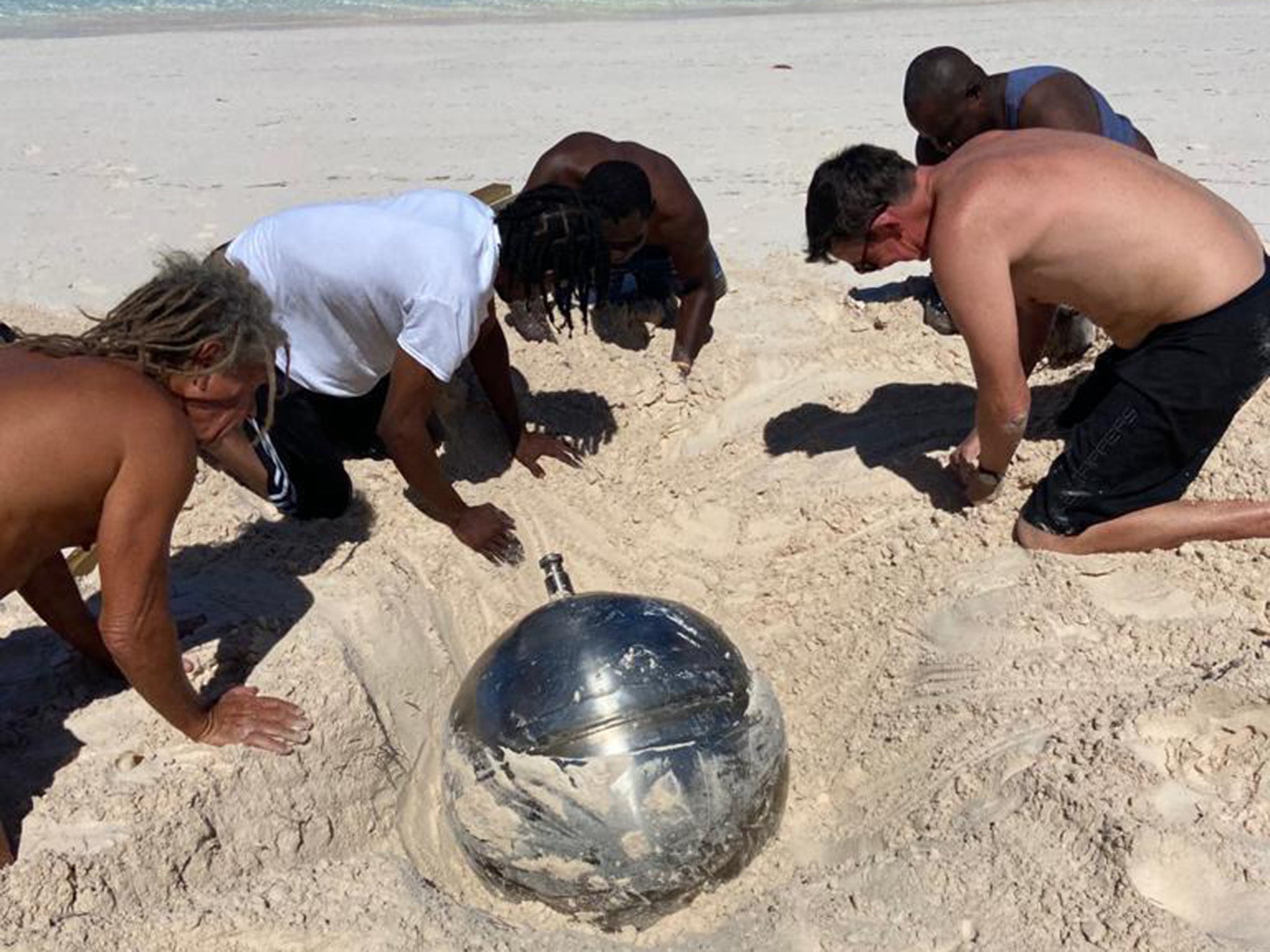Mystery 41kg Russian metal object found on beach in Bahamas ‘could be from spacecraft’
Space experts believe object could have come from satellite or spacecraft

Your support helps us to tell the story
From reproductive rights to climate change to Big Tech, The Independent is on the ground when the story is developing. Whether it's investigating the financials of Elon Musk's pro-Trump PAC or producing our latest documentary, 'The A Word', which shines a light on the American women fighting for reproductive rights, we know how important it is to parse out the facts from the messaging.
At such a critical moment in US history, we need reporters on the ground. Your donation allows us to keep sending journalists to speak to both sides of the story.
The Independent is trusted by Americans across the entire political spectrum. And unlike many other quality news outlets, we choose not to lock Americans out of our reporting and analysis with paywalls. We believe quality journalism should be available to everyone, paid for by those who can afford it.
Your support makes all the difference.A strange titanium ball covered in Russian text has been discovered on a beach in the Bahamas.
A British woman, Manon Clarke, spotted the 41kg reflective ball poking out of the sand while she was walking with her family at Harbour Island on Wednesday evening.
“We went walking to a different spot than usual and I noticed this silver shiny moon thing poking out the sand,” the 24-year-old told The Independent.
“We could see the Russian writing on the side, so we started digging away to see more of it, which was a bit of a bold move given that we had no idea what it was.”
Space experts believe that the ball could be a Hydrazine Propellant Tank for a satellite or spacecraft, though uncertainty remains about where it came from and how it came to be on the beach.

Mark Morabito, Chairman of Virgin Galactic and an astronaut in training, said he was “99 per cent certain it is a hydrazine tank from a rocket of some kind”, which are used on unmanned rockets for satellite launches.
The Russian text on the object notes it has an operating temperature range of between -170C and -196C, a capacity of around 43 litres, a maximum weight of around 41kg and also suggests it may have been constructed in 2018.
Dr Martin Archer, UKRI Stephen Hawking Fellow in Space Physics and Public Engagement at the Department of Physics at Imperial College London, said “it is clearly a Hydrazine Propellant/Bladder Tank”, which are “usually used on uncrewed spacecraft or satellites and squeeze propellant into rocket engines or thrusters.”
It cannot be determined how or where the tank came from but Dr Sarah Hudspith, Associate Professor in Russian at the University of Leeds, said “the object may have originated from Cuba, given that Cuba was an ally of the Soviet Union, from which it obtained all kinds of equipment”.
Unable to move the tank, Ms Clarke and her parents went home to show pictures of it to their neighbours, soon realising it was something significant.
She said: “We left the beach because it was getting late and went back the next day with a crew of friends to try to lift it off the beach. We stupidly forgot shovels so we had around six guys do a lot of digging.”

Dr Archer said: “How it washed up in the Bahamas is rather mysterious.”
But he said one thing to bear in mind is that most satellites or satellite parts that come back down to Earth will fall in the ocean.
He added: “Under controlled circumstances, operators will usually aim for them to be deorbited and destroyed in the ‘spacecraft cemetery’ in the south pacific ocean uninhabited area, centred on ‘Point Nemo’ the furthest point from any land on Earth.
“But of course, not all satellites enter the atmosphere under such controlled circumstances.”
Dr Archer said while there is not much evidence of charring on the tank, it would not have been on the outside of the satellite, so there is a chance it could have come from a defunct satellite.
He added: “But it may also have been a spare part that accidentally winded up in the ocean. Ocean currents are known to carry junk all around our planet, so it will be almost impossible to determine exactly what journey this tank has been on.”
Ms Clarke said the unknown adds to the excitement: “Thinking about the possible places it could have come from, how long it's been there, how it got there.
“We live on such a small island so something like that is very exciting. Lots of people came down to have a look at it, including Dave Stewart from the Eurythmics.”
Subscribe to Independent Premium to bookmark this article
Want to bookmark your favourite articles and stories to read or reference later? Start your Independent Premium subscription today.
Join our commenting forum
Join thought-provoking conversations, follow other Independent readers and see their replies
Comments